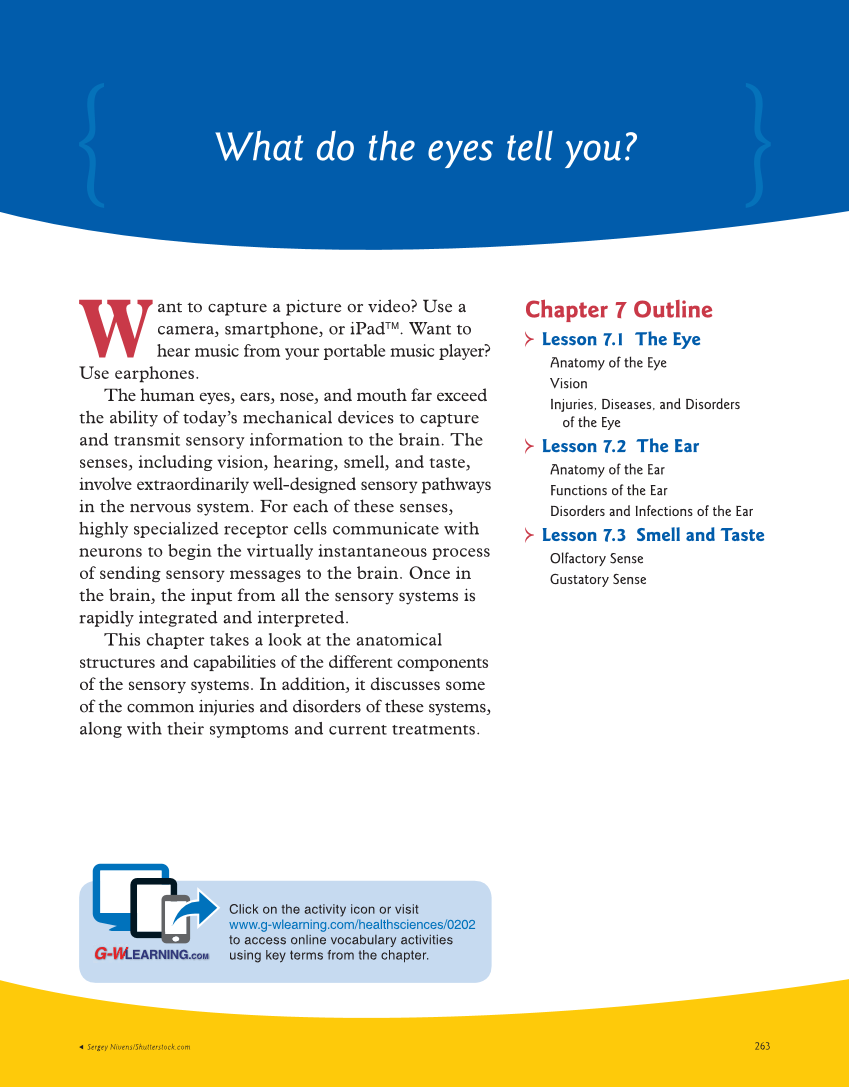263 Sergey Nivens/Shutterstock.com What do the eyes tell you? Click on the activity icon or visit www.g-wlearning.com/healthsciences/0202 to access online vocabulary activities using key terms from the chapter. W ant to capture a picture or video? Use a camera, smartphone, or iPad™. Want to hear music from your portable music player? Use earphones. The human eyes, ears, nose, and mouth far exceed the ability of today’s mechanical devices to capture and transmit sensory information to the brain. The senses, including vision, hearing, smell, and taste, involve extraordinarily well-designed sensory pathways in the nervous system. For each of these senses, highly specialized receptor cells communicate with neurons to begin the virtually instantaneous process of sending sensory messages to the brain. Once in the brain, the input from all the sensory systems is rapidly integrated and interpreted. This chapter takes a look at the anatomical structures and capabilities of the different components of the sensory systems. In addition, it discusses some of the common injuries and disorders of these systems, along with their symptoms and current treatments. Chapter 7 Outline Lesson 7.1 The Eye Anatomy of the Eye Vision Injuries, Diseases, and Disorders of the Eye Lesson 7.2 The Ear Anatomy of the Ear Functions of the Ear Disorders and Infections of the Ear Lesson 7.3 Smell and Taste Olfactory Sense Gustatory Sense
